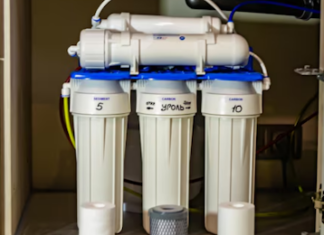Whether you’re a neophyte or an experienced forex trader, it’s critical to understand what a PIP is and how it affects your earnings and losses. This article will tell you everything you need to know about PIPs in forex trading, including what they are and how you can calculate them.
So whether you’re just starting or want to improve your understanding of this essential Forex term, read on. You can also read more about forex trading here.
What is a pip?
A pip is a ‘point in percentage’ and is the smallest unit of measure in forex trading. A currency pair is formed when one currency is exchanged for another. When you trade currencies, you buy or sell a quantity of one currency in exchange for another. For example, if you purchase EUR/USD, you acquire Euros and sell US Dollars.
The price of a currency pair must be quoted in terms of PIPs. For example, if the EUR/USD exchange rate is 1.1550, that means one Euro costs 1.1550 US dollars (or that one US dollar costs 0.8645 Euros). The final two digits of the exchange rate are known as ‘pips’. In this example, the ‘5’ is the last digit and would be worth 1/100th of a cent if we talked about US dollars.
However, because currencies are traded in pairs, we need to multiply by the current quote to get the value of a pip in US dollars. In this case, 1 pip would be worth $10 (1 x 0.0001 x 1.1550).
In currency pairs involving the Japanese yen, a pip is considered to be 0.01. Therefore, if USD/JPY moves from 132.83 to 132.80, it will have moved 3 pips. New traders should be aware of this when they are trading the Japanese yen.
Common mistakes traders make
Even experienced traders can sometimes make mistakes when it comes to pips. Here are some common mistakes traders make when dealing with pips.
Not knowing what a pip is
Many beginning traders think that a pip is simply the smallest unit of price movement in a currency pair. However, as we’ve seen, a pip is 1/100th of 1% or 0.0001 of the quote. So, when a currency pair moves from 1.3600 to 1.3650, that’s a 50-pip move.
Not knowing what lot size is
A lot is the standard unit size of currency trade. A standard lot is 100,000 units of the base currency, a mini lot is 10,000 units, and a micro lot is 1,000 units.
Not knowing how to calculate pip value
The Pip Value is a parameter that indicates the dollar impact of a one-pip change on your open position. It can be calculated using this formula:
Pip value = (one pip / exchange rate) * lot size
For example, if you’re trading a standard lot of EUR/USD with an account denominated in USD, and the EUR/USD exchange rate moves from 1.3600 to 1.3650, that’s a 50-pip move.
The pip value would be:
Pip value = (0.0001 / 1.3600) * 100,000 = $7.35
Not knowing how leverage works
Leverage is the ability to control a large amount of money with small capital. It allows traders to make more profits than they would with their capital alone. However, it also magnifies losses.
Most brokers offer leverage ratios of 50:1, 100:1, 200:1, and 400:1. For every $1 you have in your account, you can control $50, $100, $200, or $400 worth of currency.
Not managing risk correctly
Many traders take on too much risk when trading currency pairs. They may trade with too much leverage or not use stop-loss orders to limit their losses.
Always use proper risk management methods to protect your money, such as stop-loss policies and limiting your leverage ratio.
Not having a trading plan
Before you can make a trade, you must have a trading strategy. This plan should include your entry and exit points, profit goals, and risk management strategy.
Not knowing when to take profits or cut losses
One of the hardest things for traders is taking profits or cutting losses. It’s often tempting to let your winners run, and your losers grow, but this recipe for disaster.
Instead, you need to set profit targets and stop-loss orders before placing a trade. Then, you need to stick to your plan and take profits or cut losses when your target is reached or your stop-loss is hit.
Not tracking your results
Finally, many traders don’t track their results correctly, and they may not keep accurate records of their wins and losses, or they may only focus on their winning trades and ignore their losing ones.
It’s essential to keep track of all your trades, winners and losers. It will help you identify any patterns in your trading and improve both your overall success rate.









